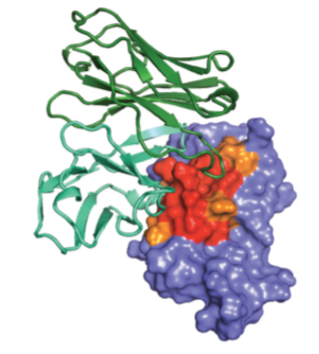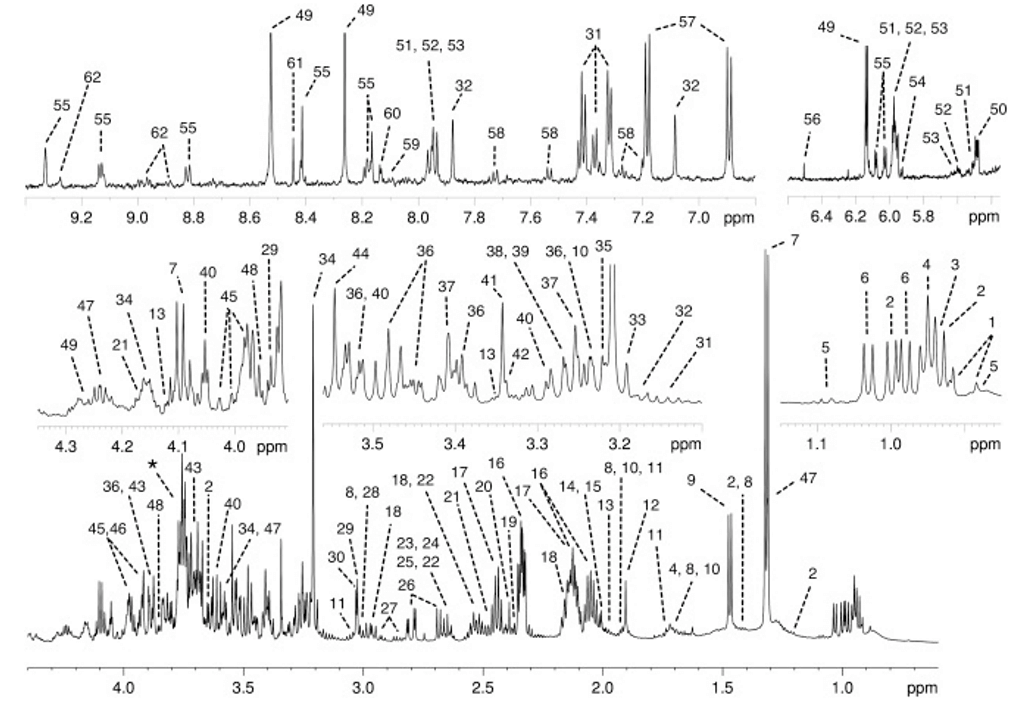Nuclear magnetic resonance (NMR) is a phenomenon that some specific atomic nuclei (1H, 13C, 15N, 31P, 19F, etc.) absorb a certain frequency electromagnetic wave in a strong magnetic field to achieve resonance transition. The signal position and intensity at the time of recording resonance is the NMR spectrum.
NMR is one of the important research techniques in the field of biopharmaceutical. It is not only used as a conventional structural analysis method to determine the solution structure and kinetics of biomacromolecules and their complexes, but also widely used as a standard test method to study the interaction of biomacromolecules-biomacromolecules and biomacromolecules-small molecule ligands.
Epitope mapping
The epitope analysis can be achieved using NMR is because the NMR signal is very sensitive to the local chemical environment. When the antibody and antigen form a complex, the chemical environment of the interface residues on the surface of protein-protein contacts changes, and it is no longer the interaction state between the antigen and the solvent. This change in the chemical environment is finally revealed as a changed chemical shift signal. Therefore, the interface amino acids of the antibody-antigen interaction can be easily obtained by comparing the original NMR spectrum of the antigen and the spectrum after adding the antibody.

Media and metabolite analysis
The upstream fermentation process greatly affects the quality of biopharmaceuticals, and the analysis of the culture medium and metabolites is critical for the development of this process. Commonly used analytical methods are liquid chromatography and LC-MS for the analysis of amino acids and metabolites. However, NMR methods have also been developed to analyze cell culture media and metabolites.
Only a small amount of sample is required when using the NMR method. The sample processing is very simple (1 sample plus 3 parts of buffer containing heavy water that is used to suppress the solvent peak), no separation is required, and the detection can be performed directly by adding a nuclear magnet tube, and the quantification is accurate.

Comparability research
In the development life cycle of protein drugs, many process changes could happen, such as medium changes, upstream fermentation and culture technology, and downstream purification technology optimization. In order to prove that the change will not affect the quality of the product, a comparability study is indispensable, which is directly related to the three-dimensional structure and function of a protein. Protein drugs' high order structure (HOS) is usually considered a critical quality attribute (CQA) and necessary data in comparability studies. Certain challenges are associated with characterizing the HOS. Commonly used methods include infrared (IR), differential scanning microcalorimetry (DSC), circular dichroism (CD), fluorescence, and so on. However, the sensitivity and resolution of these methods are low, and they are not sensitive enough to detect local conformational changes of the protein. One-dimensional NMR has high sensitivity and can distinguish most samples. The chemical shift is very sensitive to the environment.
Formulation development
As subcutaneous injection preparations become more and more popular, more studies have focused on the development of high-concentration antibody preparations. At high concentrations, antibodies are prone to precipitation or self-association. To study the antibody status and aggregation, a variety of orthogonal methods are needed.
At present, the detection concentration range of many analytical methods has certain limits, and in many cases, dilution is required for detection. But once it is diluted, the state of the sample may not reflect the true state of the high concentration.
A popular method in recent years is to use NMR to analyze preparation samples and the state of antibody samples under different excipients and concentrations. NMR signal acquisition does not require sample dilution, and it is in situ detection.






